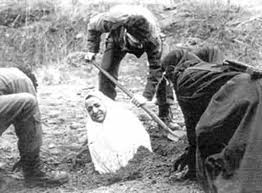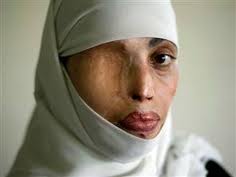
Stoning
I haven’t made a study of all the reasons men give for subjugating women.
I’m not sure why one human being enslaves another. The reasons seem to shade off into increasing darkness and I haven’t felt a desire to go there.
But I have been the recipient of hundreds of appeals from women to allow them to stay in my country, safe(r) from violence and other forms of persecution, as a result of being a human-rights decision-maker in my country.
As a Member of the Immigration and Refugee Board of Canada, I was tasked with deciding whether an appeal for sanctuary was justified.
That involved determining (A) if the claim was credible and (B) if it had a link (called “nexus” in legal language) to the U.N. Convention on refugees. There was more to it than that, but that is the heart of it.
As a straight line of unfoldment from the beatings my Mother had to endure to the day I took my seat determining refugee claims, my interest lay in seeing what could be done to end the violence against women in the world.
Nonetheless, it didn’t occur to me when I called my first claim to order that I was there to look into the plight of women. It simply developed that I felt drawn to gender clams, drawn to hear what was happening to women in the world.

Acid attack
It was a sorry tale. Kathleen has called it “the sorrow of women.”
The saddest it got was one woman’s tale of being treated as a sexual slave by the Chechen mafia. She bravely stammered out the words through her tears, describing how they would come into her parents’ house and take her for a week, chain her, drug her, and rape her.
She’d been turned down by the authorities in another country so that Canada was, as far as she was concerned, her last chance. (1) And given how terrible her story was, I can see that she might not want to go through retelling it again.
I was so deeply affected by her testimony that I had to lock myself in my office for three hours afterwards and cry. No one can fake such a story or the emotionality she tried to suppress and couldn’t, in the telling of it.
A second example would be the woman from Bangladesh, a doctor who had had Bell’s palsy as a child and, because she was a girl, was not given medical treatment. She thereby lost her chances for a desirable marriage. She fought to go to university. She had to fight to become a doctor.
After graduation, she was more or less consigned to a restricted life in Saudi Arabia, her money being sent home, all of which her parents spent. There’s more to her story, but it was apparent that her case had been made within perhaps the first half hour and that the decision would be positive. We could have all gone home.

German woman raped after WW2
But counsel and I just looked at each other. Both of us knew that the claimant needed to be given the chance to tell her story from beginning to end just once and see that she received justice from a government official on the basis of it.
So counsel and I listened for the full three full hours. No one looked at the clock or interrupted her.
And even though I wasn’t required to give a full decision, (2) I wanted her to know that she’d been heard and that justice had been served and could be seen to have been served.
So I repeated back to her all her allegations and the reasoning, the justification upon which I based my positive decision.
I can imagine that, for her, being permitted sanctuary was an immense vindication of all she had had to endure. And certainly it was a matter for congratulation from us, the IRB, who knew her story as probably few in her life would.
(Concluded in Part 2, below.)
Footnotes
(1) At the time, Canada had the Gender Guidelines, which provided nexus to the U.N. Convention. Canada could grant asylum in cases where other countries could not. See The Gender Guidelines, IRB, Canada at http://goldengaiadb.com/index.php?title=The_Gender_Guidelines,_IRB,_Canada
That was in 2006. I’m sure by now other countries have the equivalent. If they don’t, they should.
(2) I could have just given her a positive decision and written brief reasons later.

